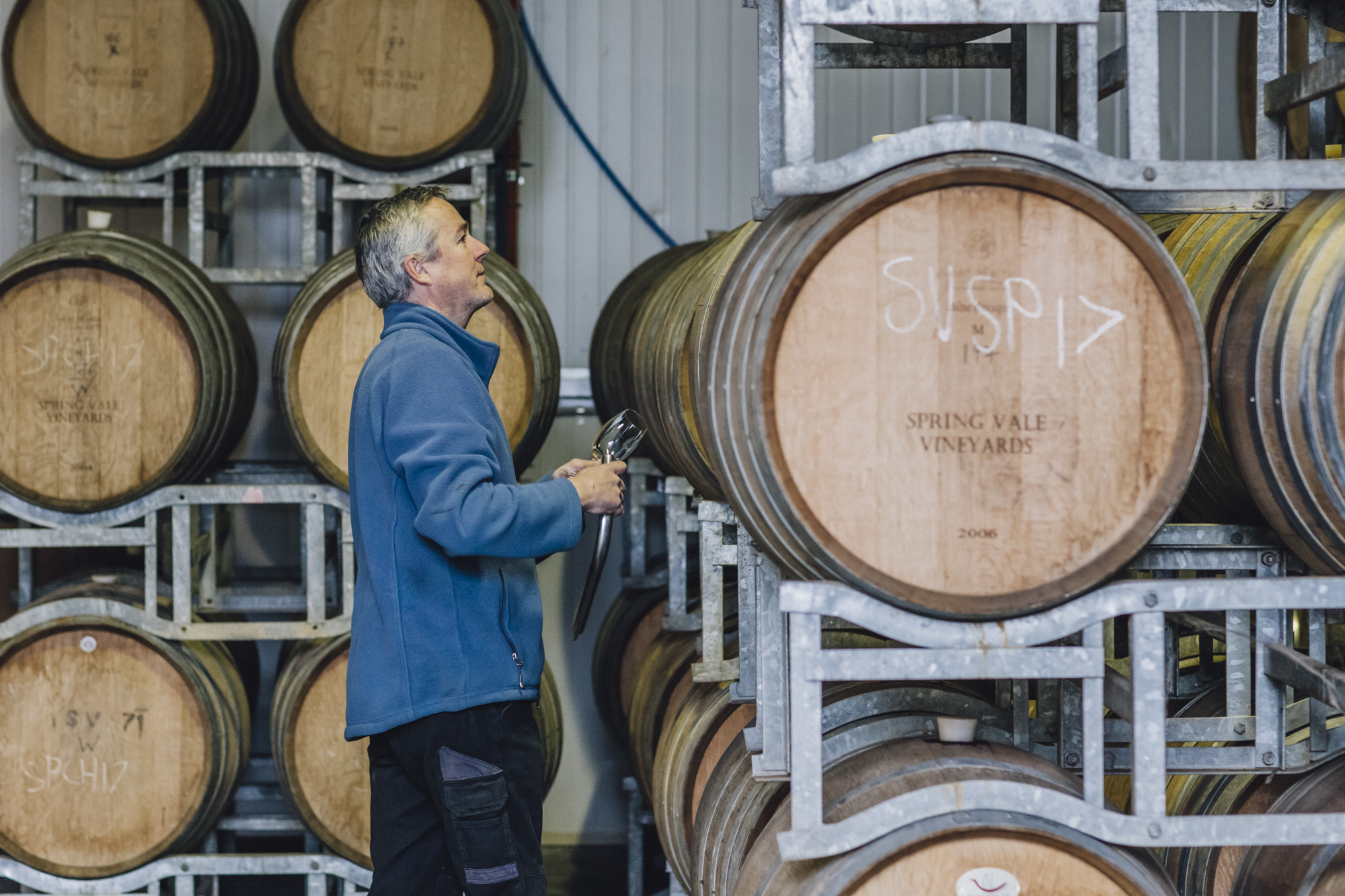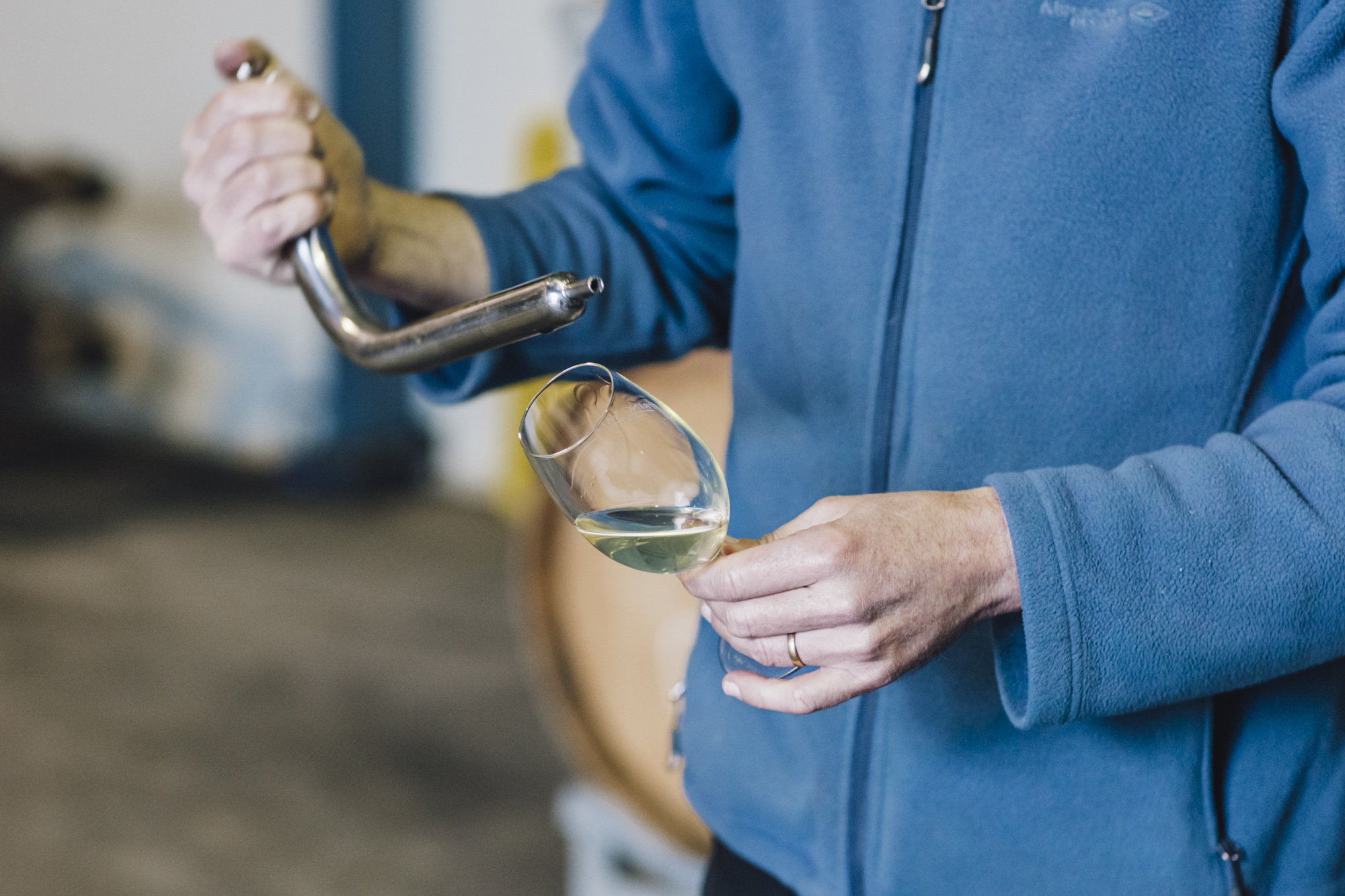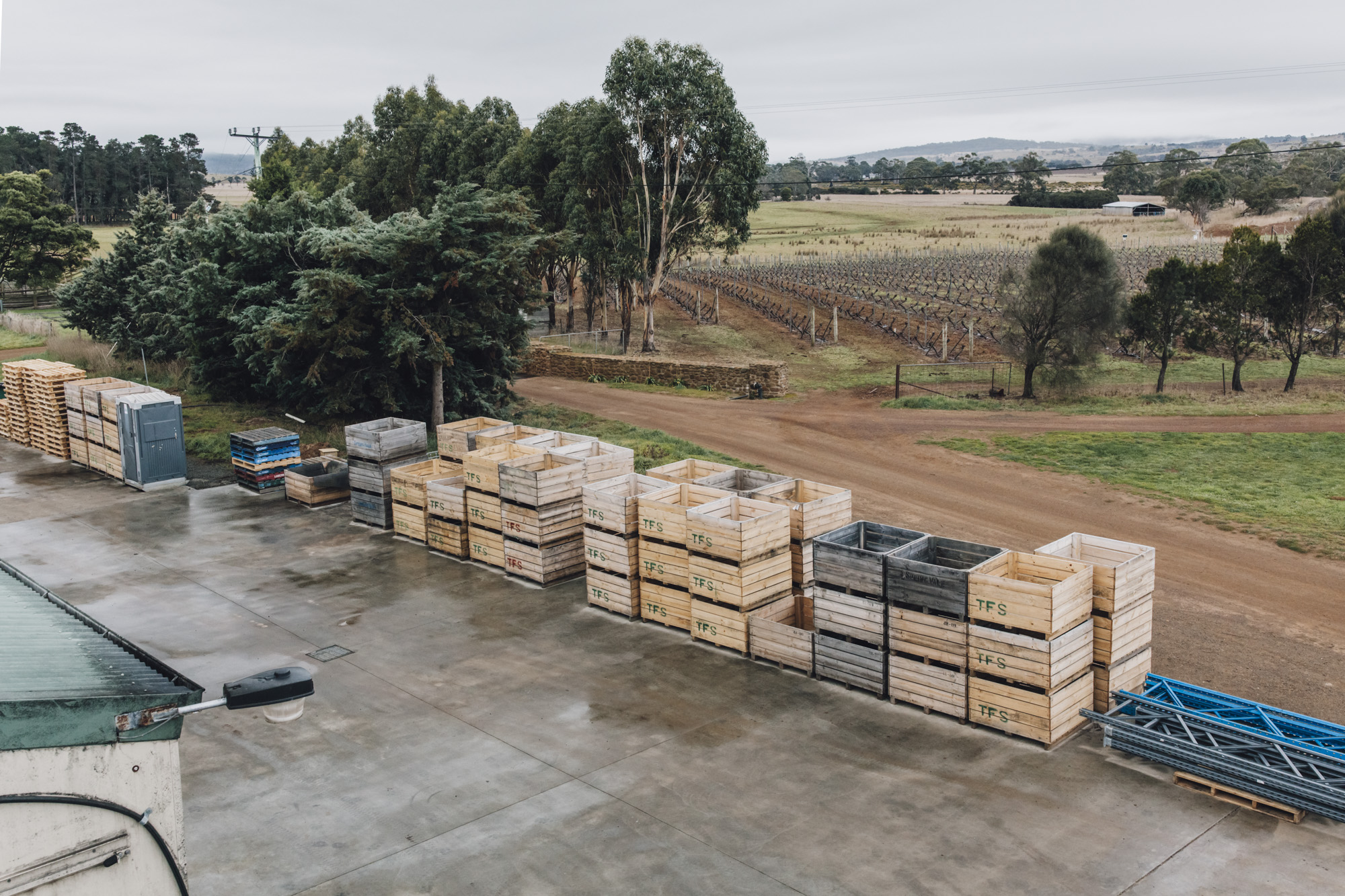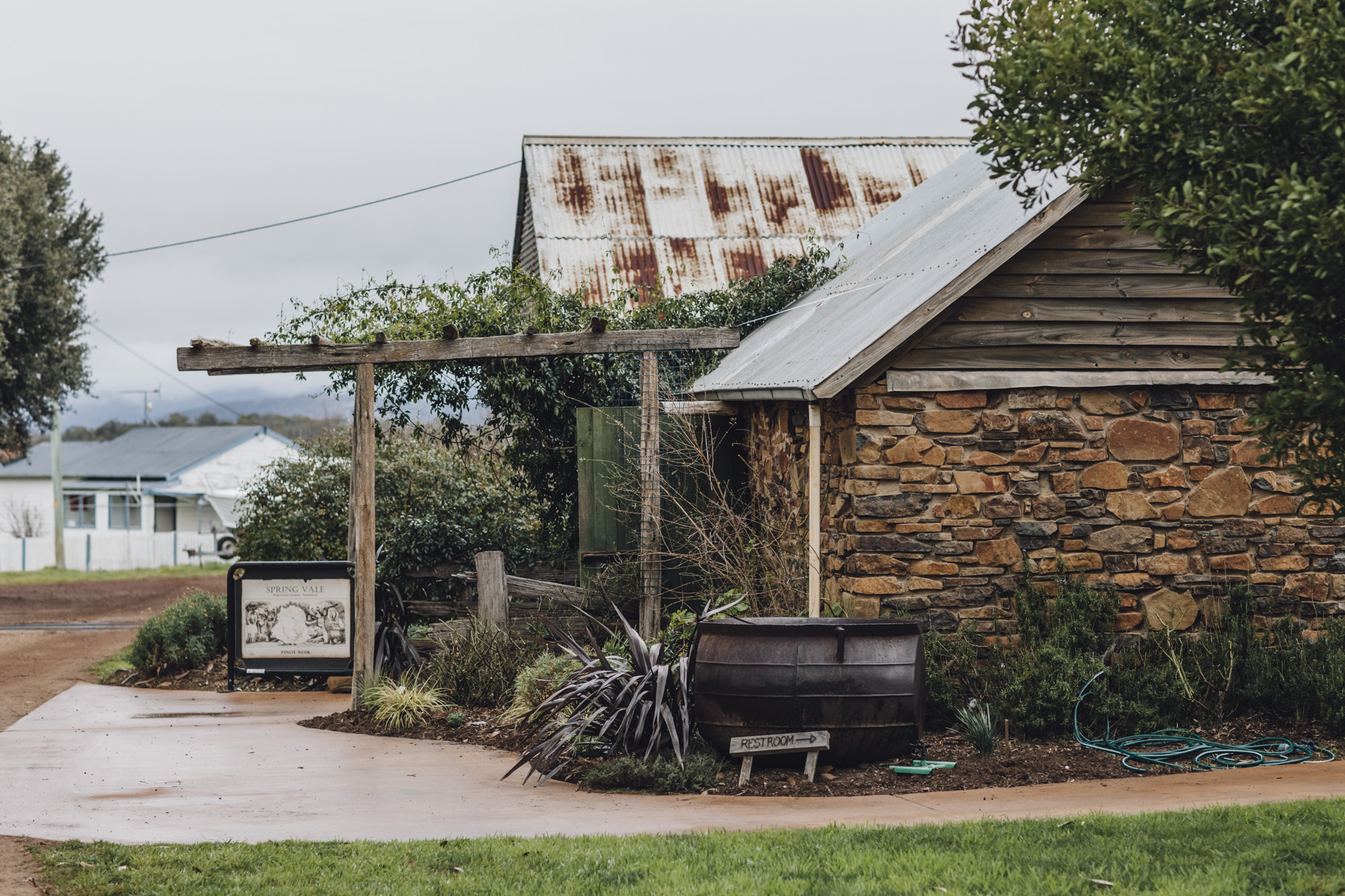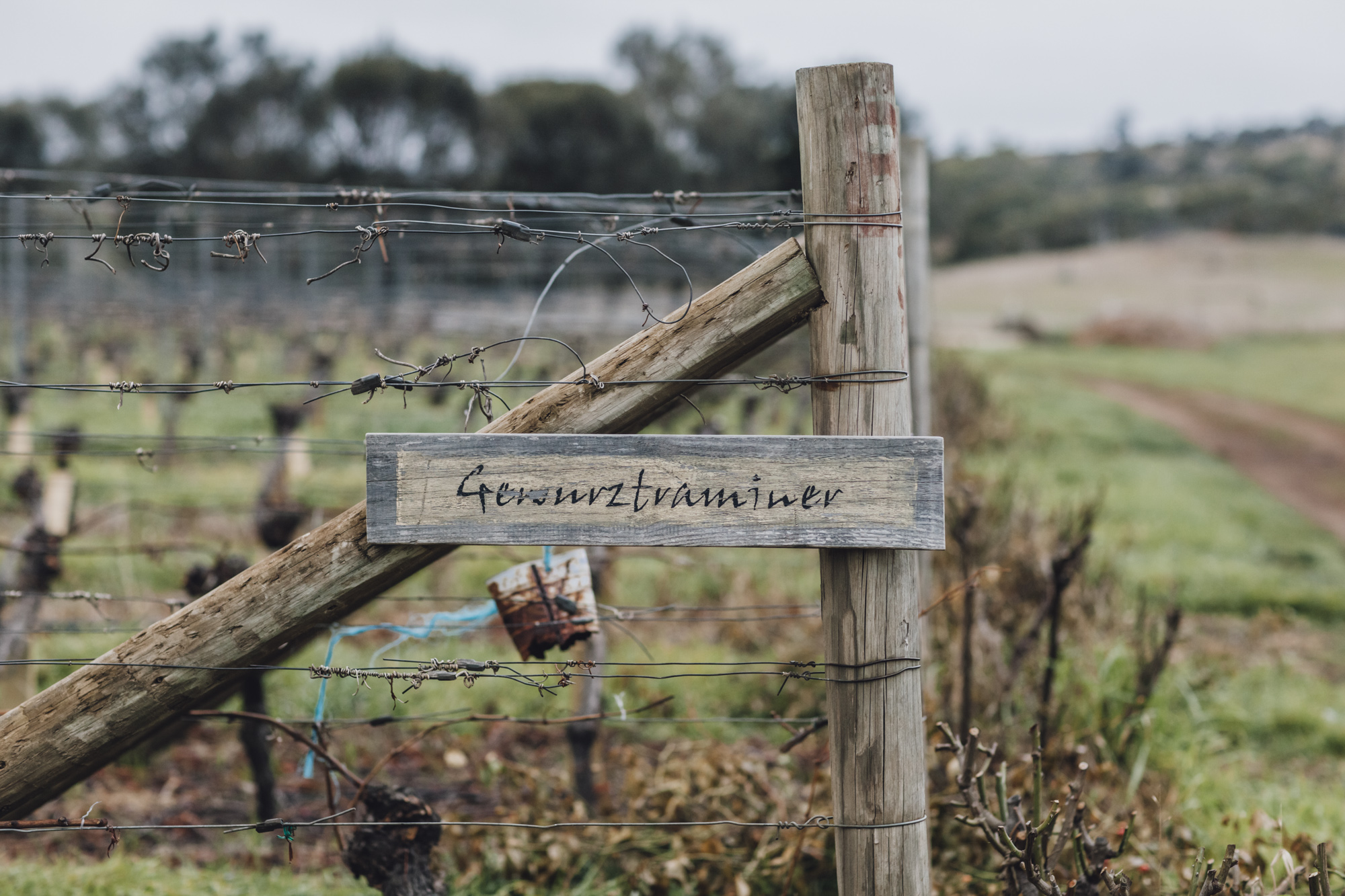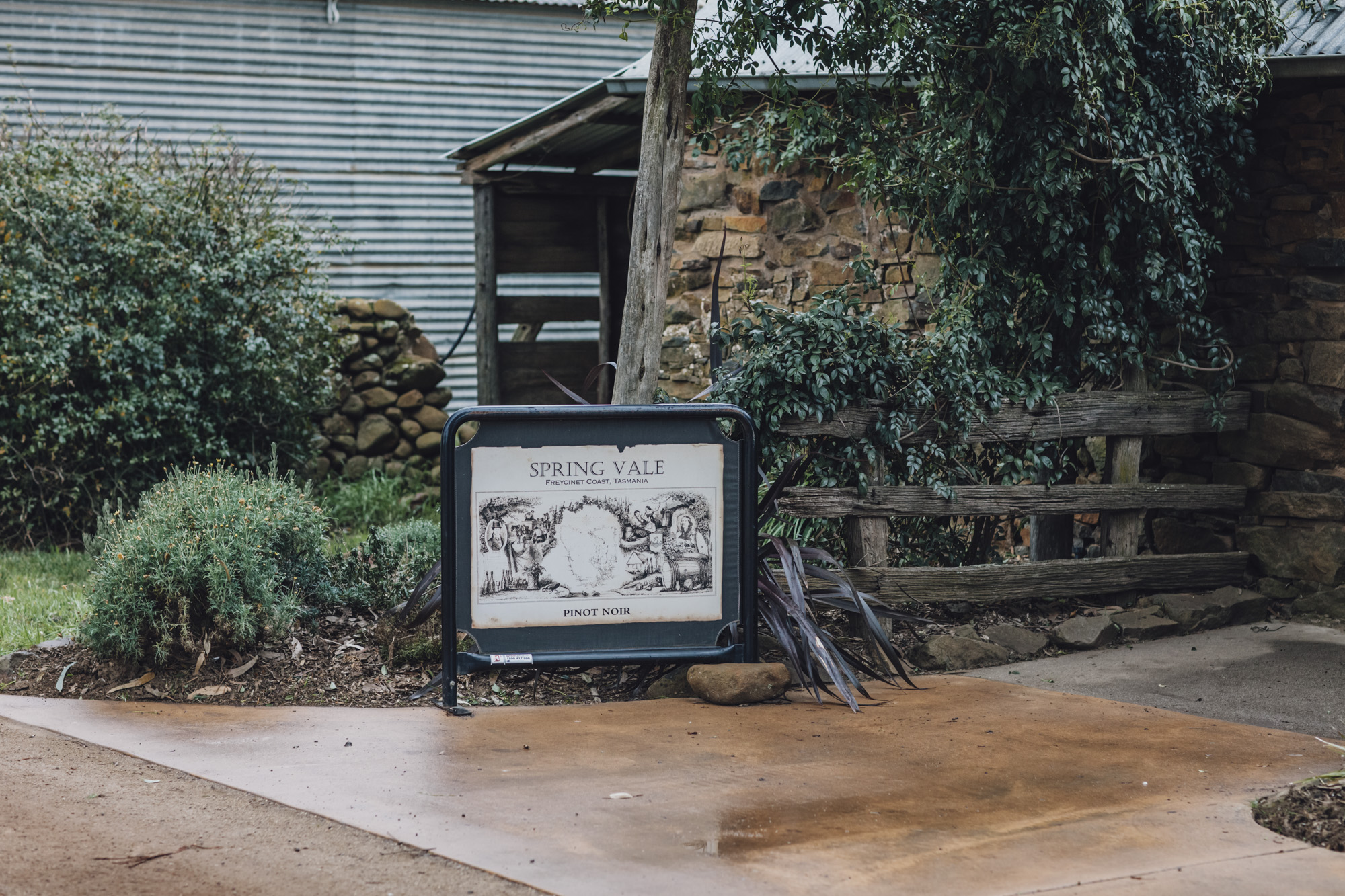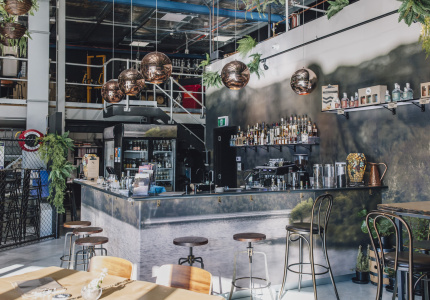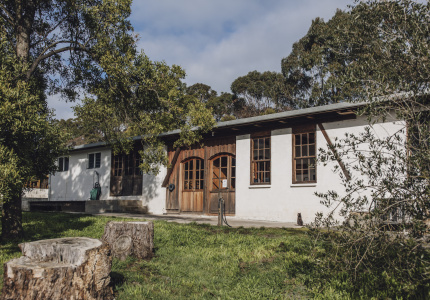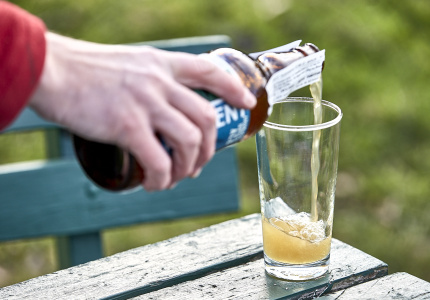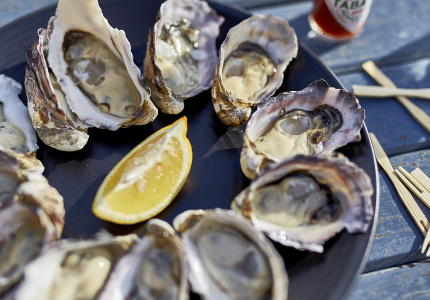Rodney Lyne’s skin is bronzed from the sun. He’s quiet. The director of Spring Vale winery doesn’t say much, but it doesn’t disguise a gentleness and lightness of spirit. The surrounds might play a part, too. We’re standing at Lyne’s farm and winery in Cranbrook, Tasmania, a short drive inland from the dazzling Freycinet coastline. This land has been worked by Lyne’s family for more than 140 years.
“The Lynes landed in Hobart in 1826,” says Rodney looking over the land. “They came up the coast in an open whale boat into Moulting Lagoon and settled at what’s now known as Apslawn.” The Lynes were traditionally sheep farmers. But when it came time for Rodney to inherit the land, he started diversifying, raising cattle and planting crops. “Poppies were the big one,” he says. “But we’ve grown potatoes, carrots, cauliflower and peas, too.”
It wasn’t until 1986 that Rodney tried planting grapes. Just two acres among the property’s sprawling 575 (“small by East Coast standards,” according to the farmer). Lyne knew the Tasmanian terrain and climate also made it ideal for growing wine, especially pinot noir. “But we feel we’ve got a bit of an edge here because we have a bit more sunshine on the East Coast,” he says.
Rodney’s son, Tim, concurs. He left the family farm to study agricultural science with honours in viticulture in Hobart, followed by a MBA in Brisbane, not returning until 2006. He’s now the general manager and viticulturist director of Spring Vale. “I probably wouldn’t be here if it was just sheep,” he admits.
Tim says the East Coast’s relative dryness compared to the rest of Tasmania makes for a delicious, slow-ripening grape with an intensity of flavour. “The older the vines, the more consistent they are,” he says. “They’re lower yielding as well, so the flavour is quite concentrated.”
In its early stages, Spring Vale would use contract winemakers to complete the grape-to-wine process. But with the build of its own winery on the property in 2002, Rodney added winemaker Matt Wood to the fold.
“One of the big advantages we have with our own winemaker on-site is Matt goes out into the vineyard, tastes regularly and picks it just when he thinks it’s perfect,” says Rodney. “If you’re using contract winemakers they’ll say, ‘We’ll take yours this week, and we’ll take the next vineyard’s the next week’.”
Wood studied engineering in Western Australia. But a stint in grape-picking while applying for jobs changed his direction. He spent 10 years in Margaret River learning how to set up a vineyard from scratch and make wine. But a taste for Burgundy and the potential of pinot noir inspired his next move. “Pinot noir is why I moved to Tassie,” says Wood. Prior to Spring Vale, Wood worked for Winemaking Tasmania, where methods are mechanised and computer programmed. At Spring Vale he relies on his scientific background, but works more with the natural environment.
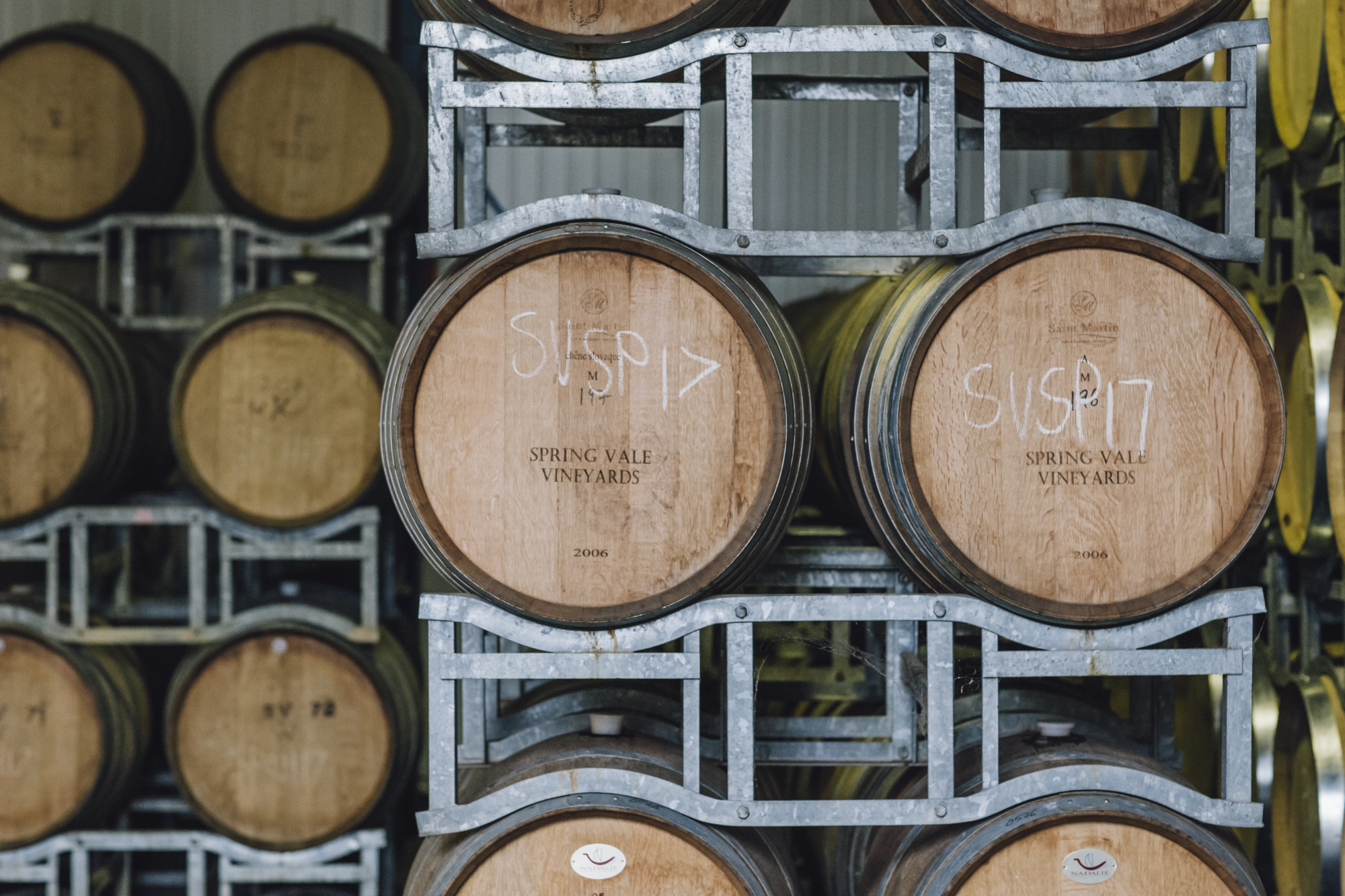
“If we want to cool the barrels, we leave them outside on a cold night,” he says. “If they’re getting towards the end of the ferment, we put them out in the sun. I’m getting more intuitive and I find that a lot more rewarding than sitting behind a computer programming everything. Here I’m learning what suits the vines in A block compared to C block compared to E block. So that’s the exciting bit. But then you get a spanner thrown in the works with each vintage with the different weather conditions. So it’s also learning how to adjust each time.”
Pinot noir takes up 80 per cent of Spring Vale’s crop, but it also grows chardonnay, pinot gris, sauvignon blanc, gewurztraminer, shiraz and pinot meunier. Wood’s methods are as unobtrusive as possible. “I don’t call myself a minimal interventionist, but I don’t muck around too much,” he says. “If you’ve got good fruit flavour, it’s about protecting it. I’ve played around with some different techniques – wild yeast ferments and whole-bunch portions (the practice of including grape stems in the fermentation process to inspire different aromatics) – but at Spring Vale we basically keep it simple.”
“If you’ve got good fruit flavour, it’s about protecting it."
Spring Vale now has 78 acres of vines. Like many small vineyards in the area that balance a diverse farming background, managing cash flow and growth is a constant game of tug-of-war. “We really can’t keep up with our distribution,” says Tim. “As we grow, the market is growing with us. So we’re always chasing our tails. But it’s a good way to be. In 2016 we expanded the winery and this year we planted 28 acres. Now we’ll consolidate for a few years until the winery has caught up to the vineyard.”
The Tasmanian climate still likes to throw a challenging curveball each season. “Frost has been the biggest challenge,” says Rodney. “We started with no frost protection and got completely wiped out one year. Then I put in a wind machine to try to stop it, before realising water sprinklers were probably a better way to go. But then I forgot to turn the alarm on one time and got wiped out again.”
Tim says the experience only adds to their knowledge and resilience. “We learn every year,” he says. “We’re able to predict the weather variations now. But you still have to be ready to get up in the middle of the night and turn pumps on.”
“It’s a lifetime experiment, isn’t it?” says Rodney.
That’s beginning to extend beyond wine. Tim has started making a gin using a grape-based spirit, East Coast botanicals and water from the natural spring that flows through creeks crisscrossing the property. “All our houses are on spring water,” says Tim. “The cattle drink spring water, the winery is washed down it – it’s in everything we do. Learning about gin-making I realised there needs to be re-distillation of the base spirit at every stage, which means you have to keep using water. So I thought, this is pure spring water, unadulterated with no chlorine and no additives, as opposed to stills in a city filled up by just turning on a tap.” The result is a delicate modern gin that’s light on juniper and more citrus-driven, making for an easy over-ice number in the warmer months.
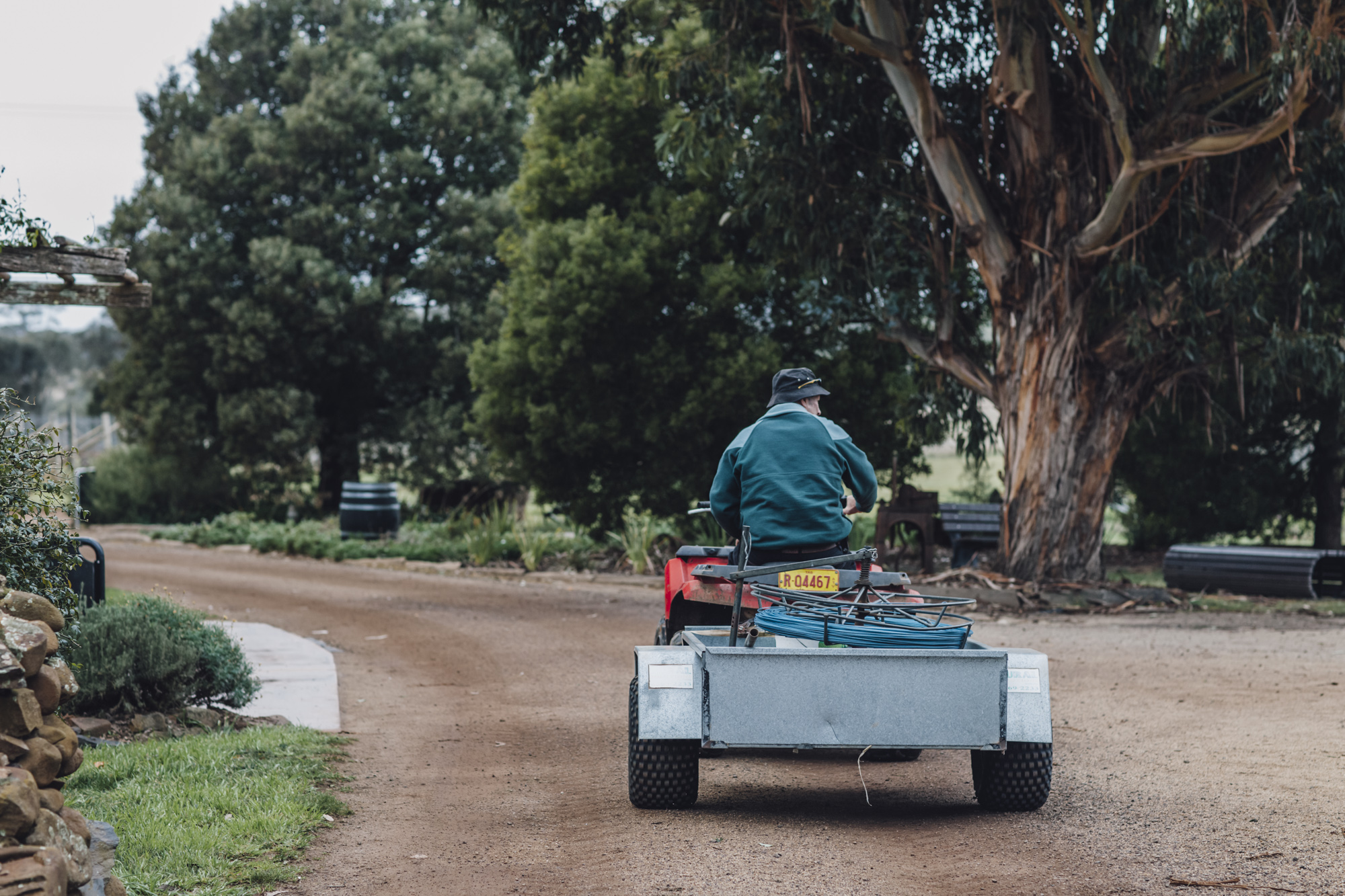
The winery’s cellar door is housed in the property’s original stables, which were built in 1842 and are now heritage-listed. There visitors can taste both Spring Vale’s wine and gin, and see relics of the Lyne family’s long farming history. “For us, farming was a family tradition,” says Rodney. “It just turns out this area is actually really suited to growing grapes and making really good wine. And that’s become a passion. You share that passion with the people who come in every day, so it’s a pretty nice way to live. It’s a beautiful place to be.”
This article is produced by Broadsheet in partnership with Tasmania – Go Behind the Scenery. Create your own Tassie story here.
with Tourism Tasmania. Learn more about partner content on Broadsheet.
